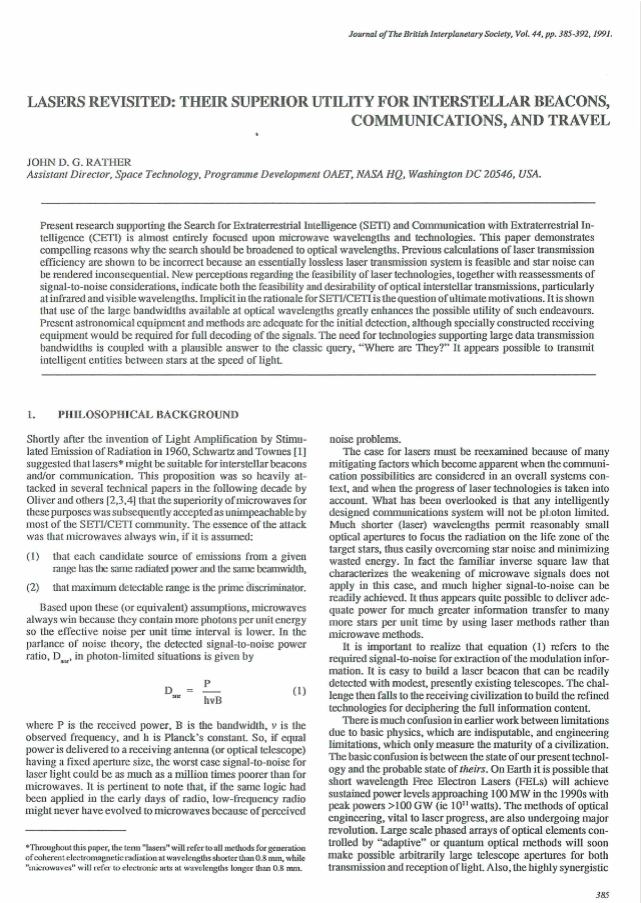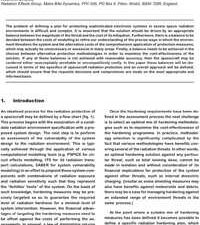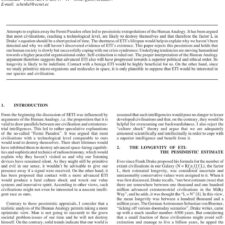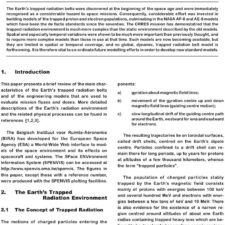Lasers Revisited: Their Superior Utility For Interstellar Beacons, Communications, And Travel
£5.00
J. D. G. Rather. (1991), JBIS, 44, pp.385-392
Refcode: 1991.44.385
Abstract:
Shortly after the invention of Light Amplification by Stimulated Emission of Radiation in 1960, Schwartz and Townes [l) suggested that lasers* might be suitable for interstellar beacons and/or communication. This proposition was so heavily attacked in several technical papers in the following decade by Oliver and others [2,3,4) that the superiority of microwaves for these purposes was subsequently accepted as unimpeachable by most of the SETI/CETI community. The essence of the attack was that microwaves always win, if it is assumed:
(1) that each candidate source of emissions from a given range has the same radiated power and the same beamwidth,
(2) that maximum detectable range is the prime discriminator.





